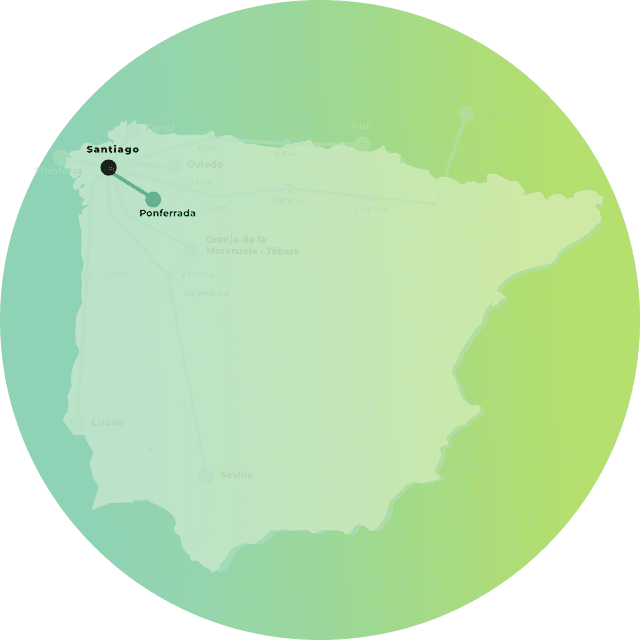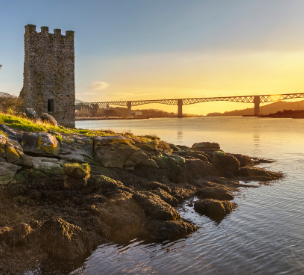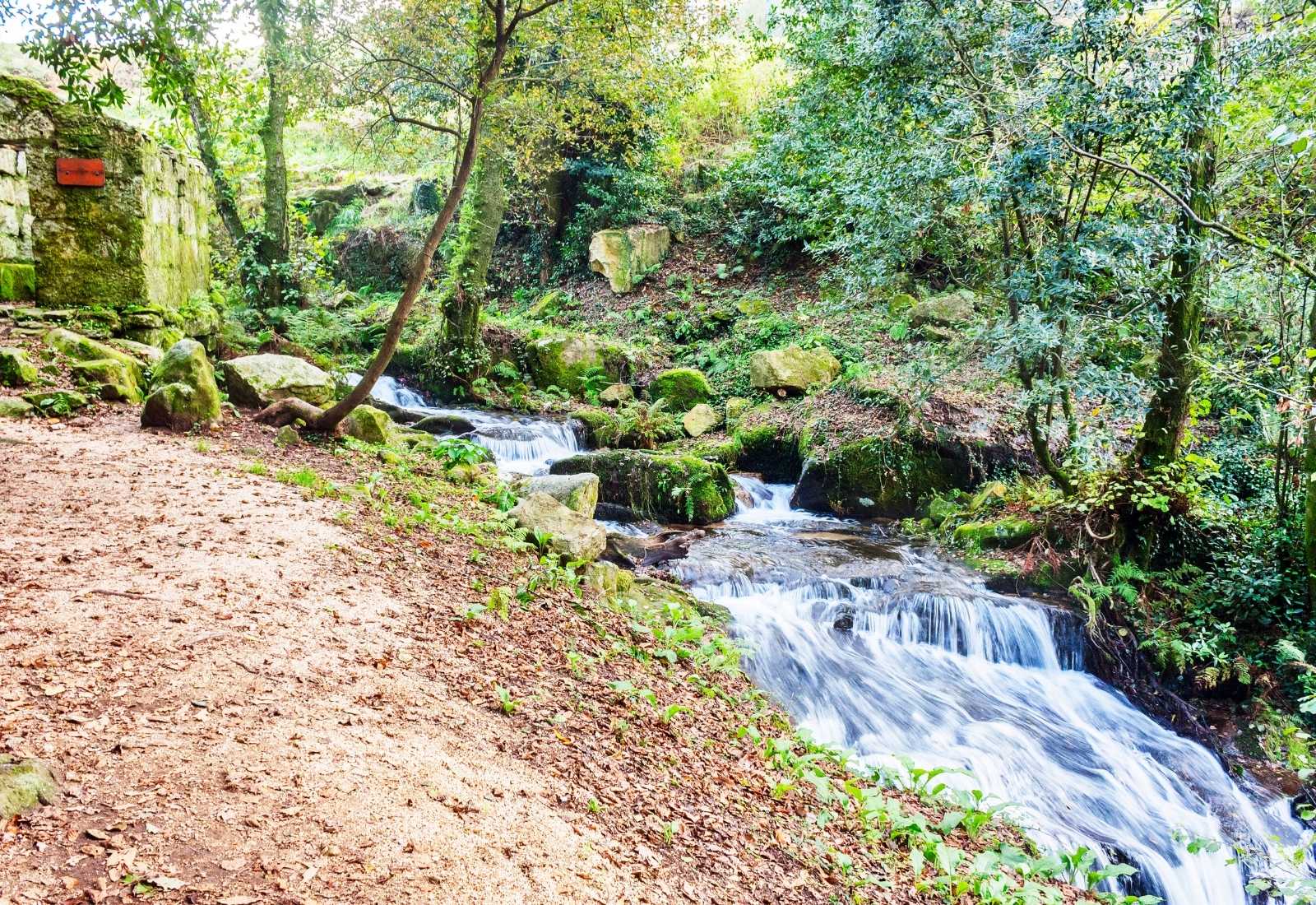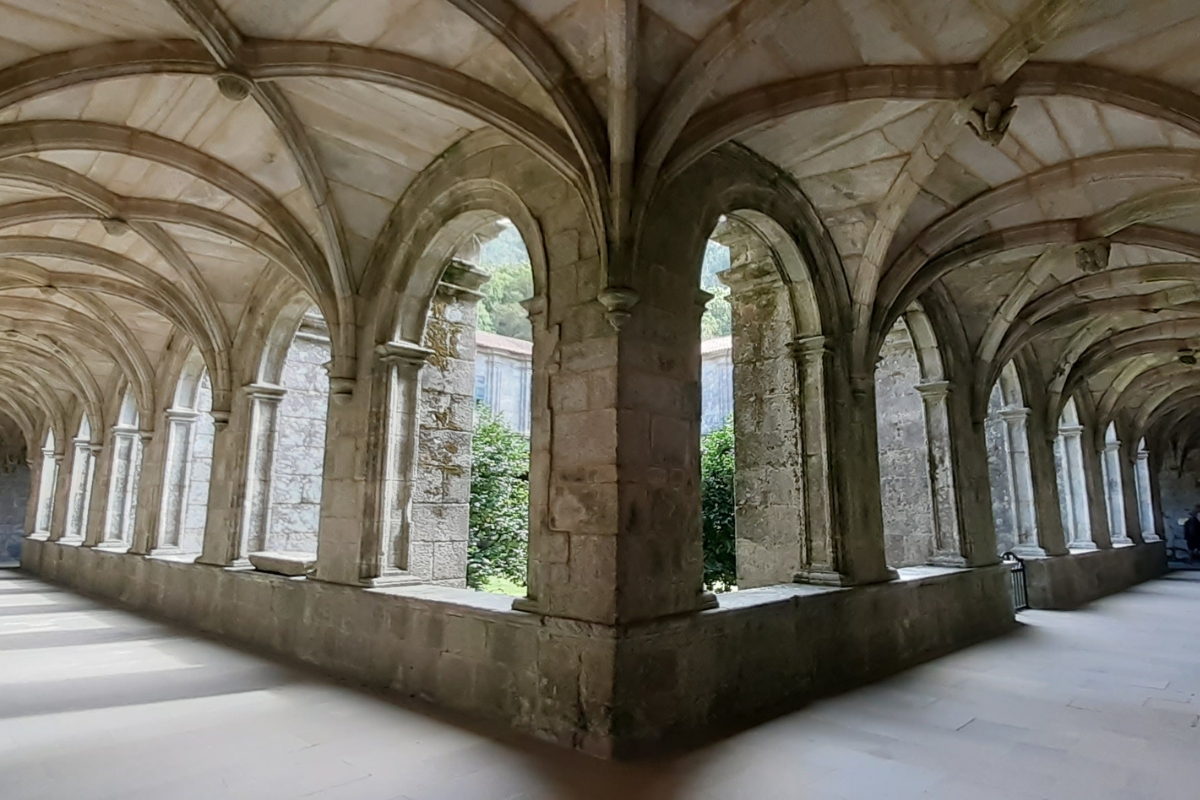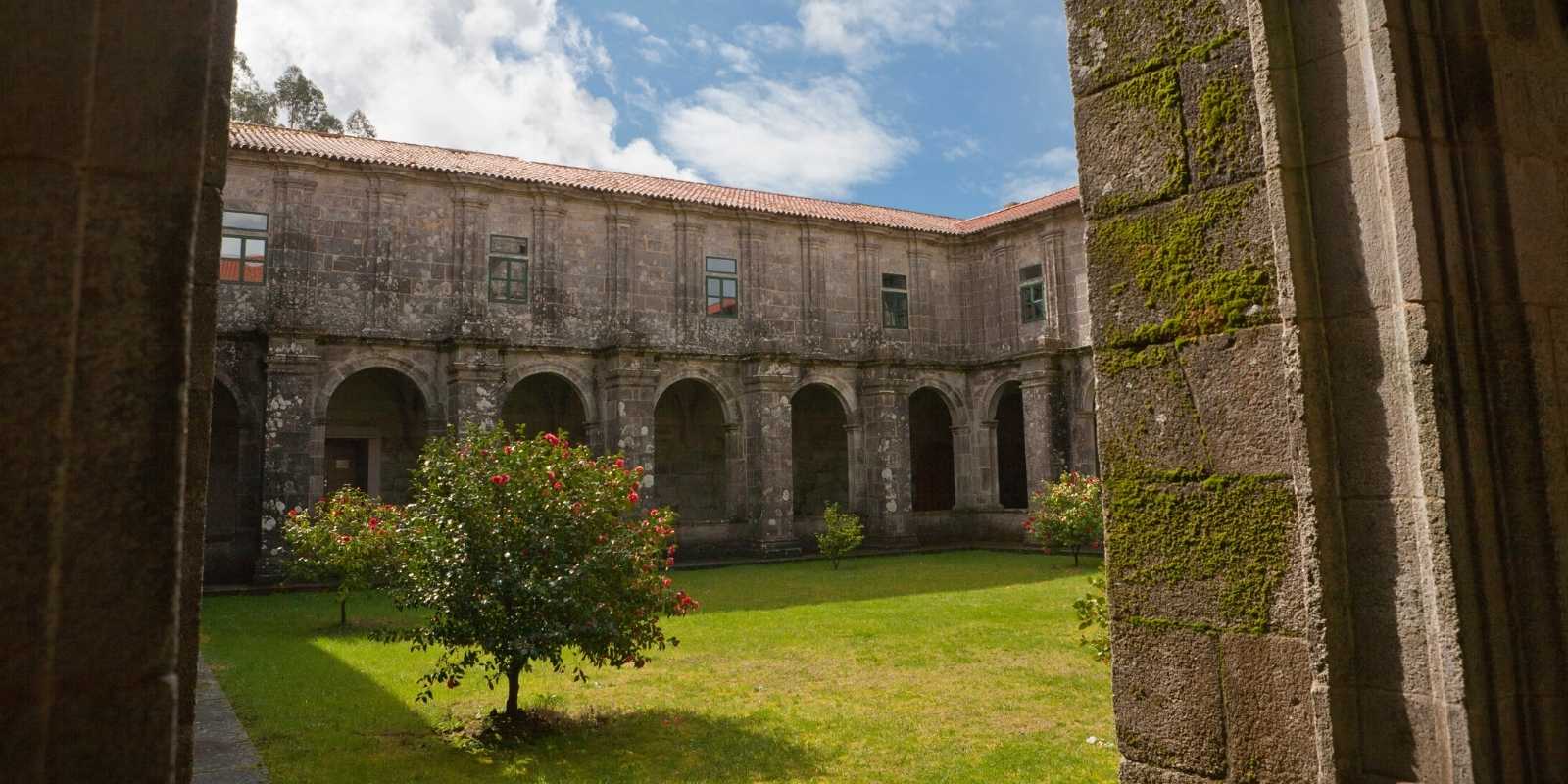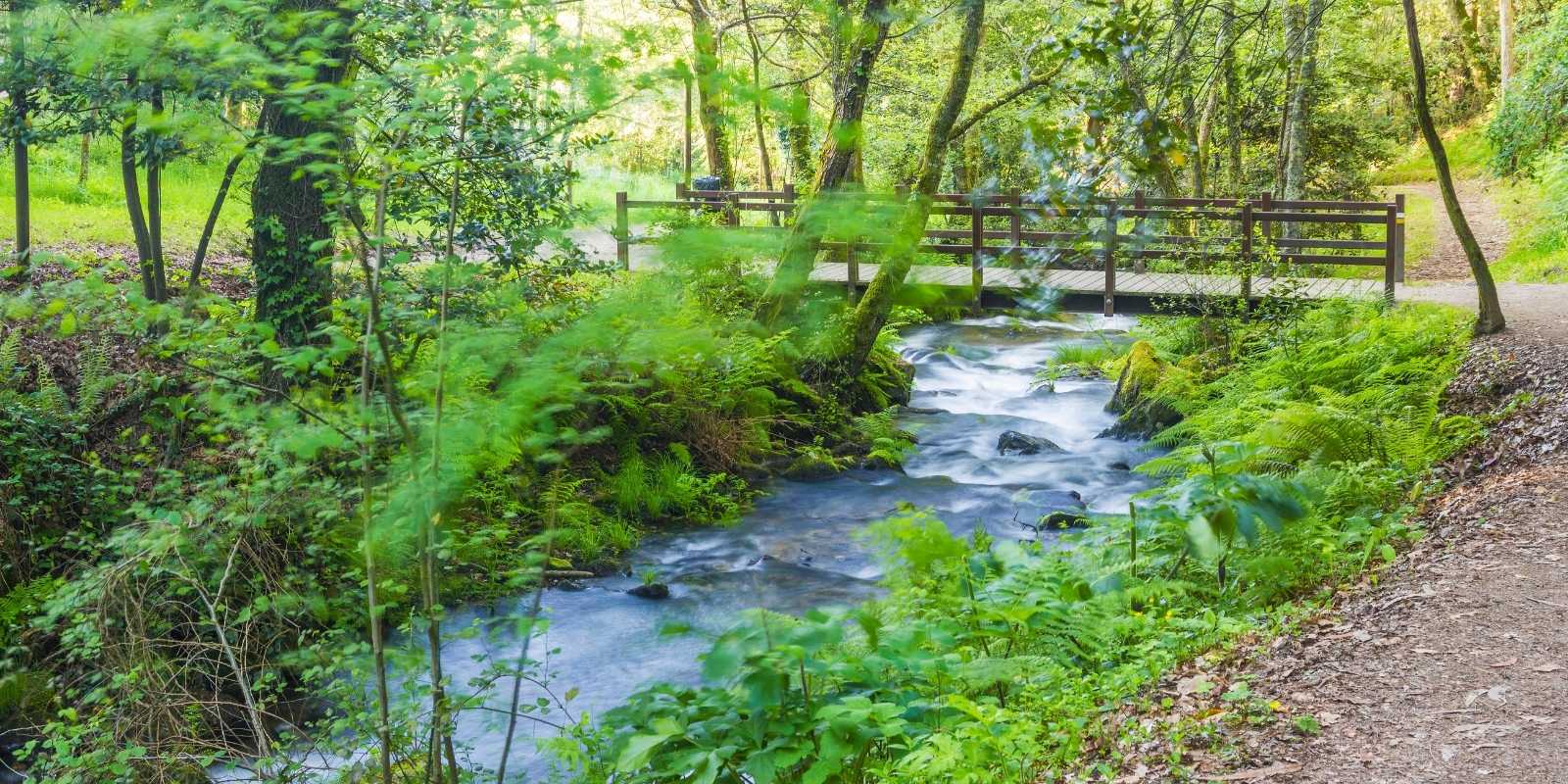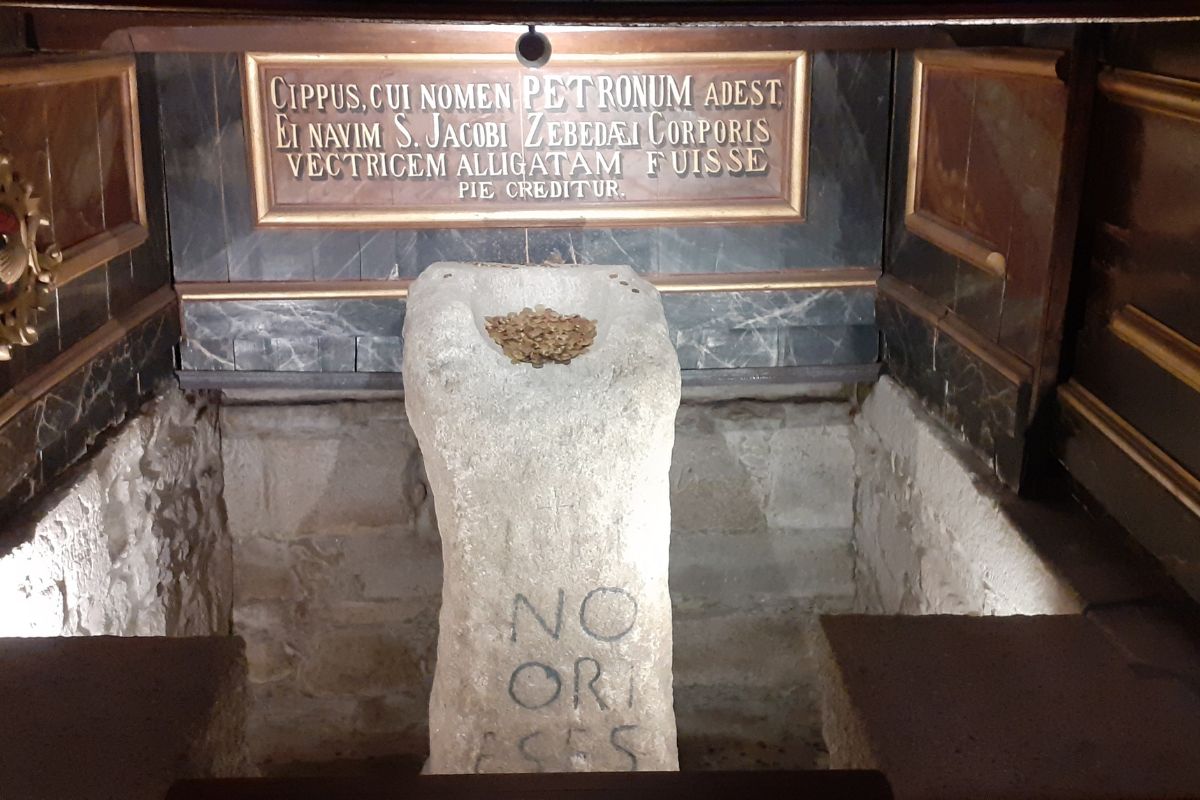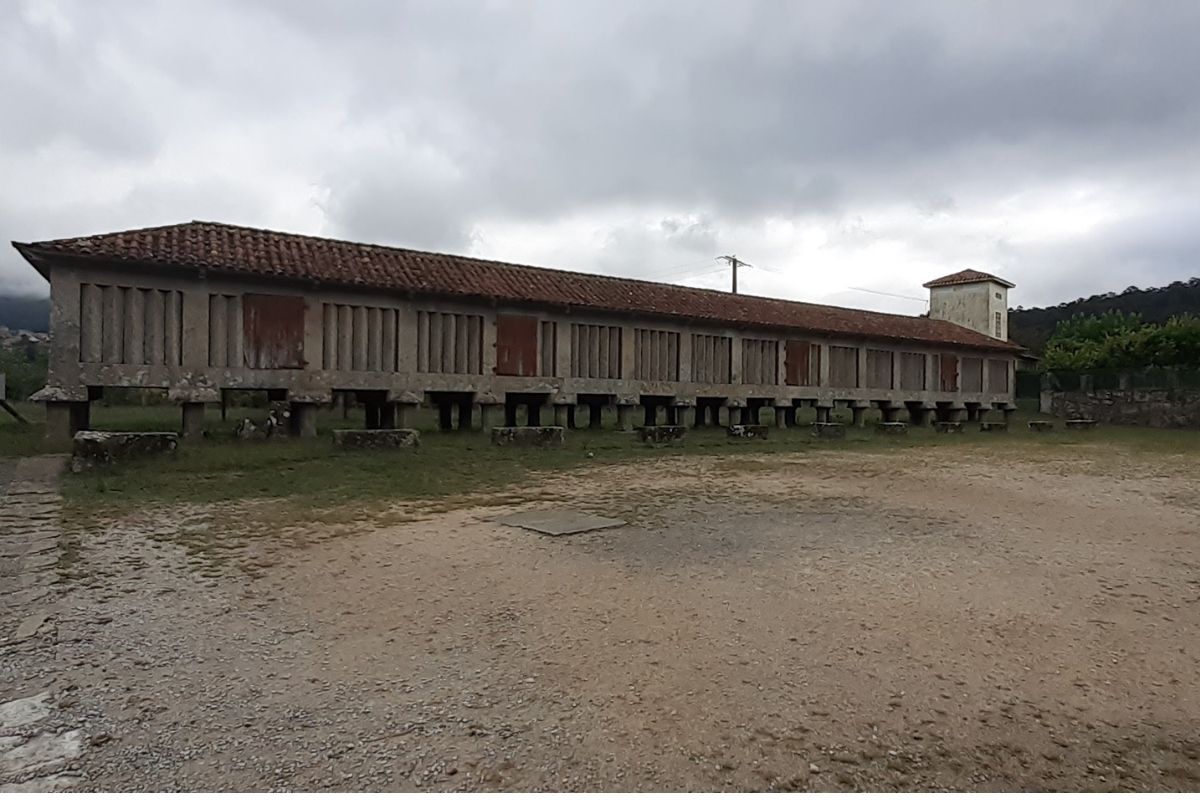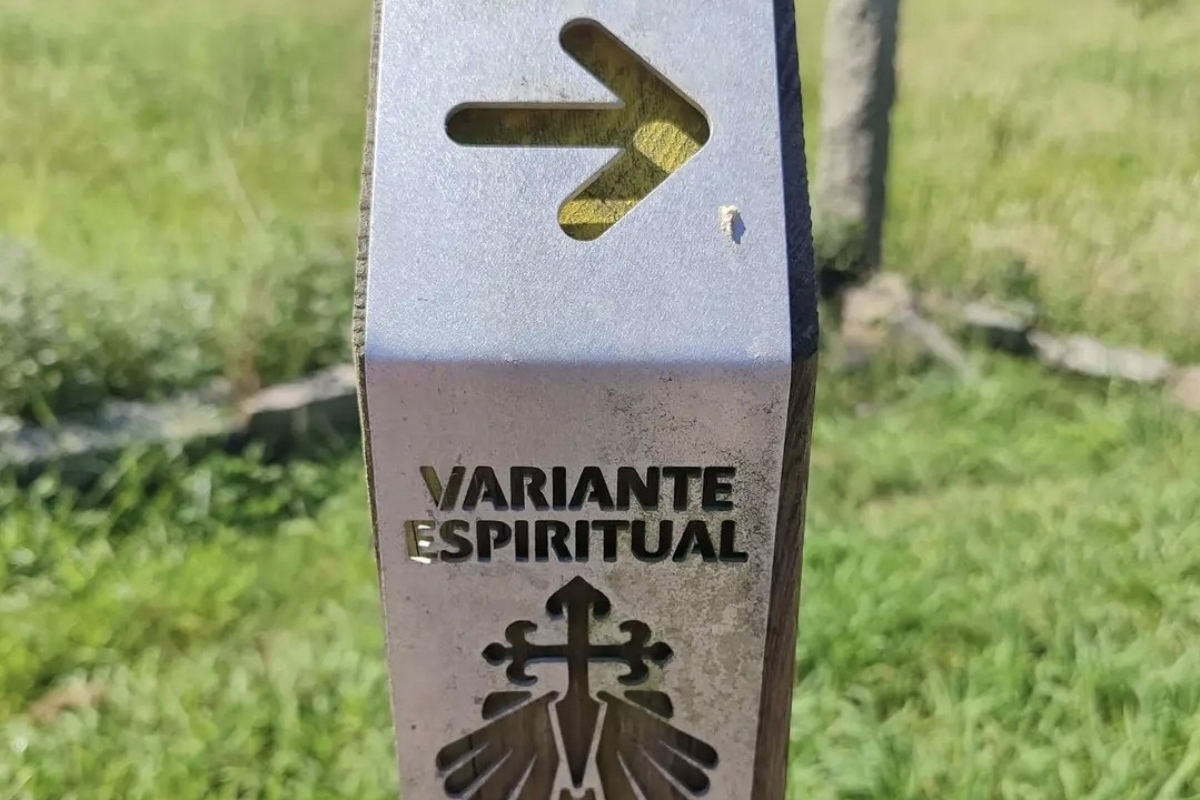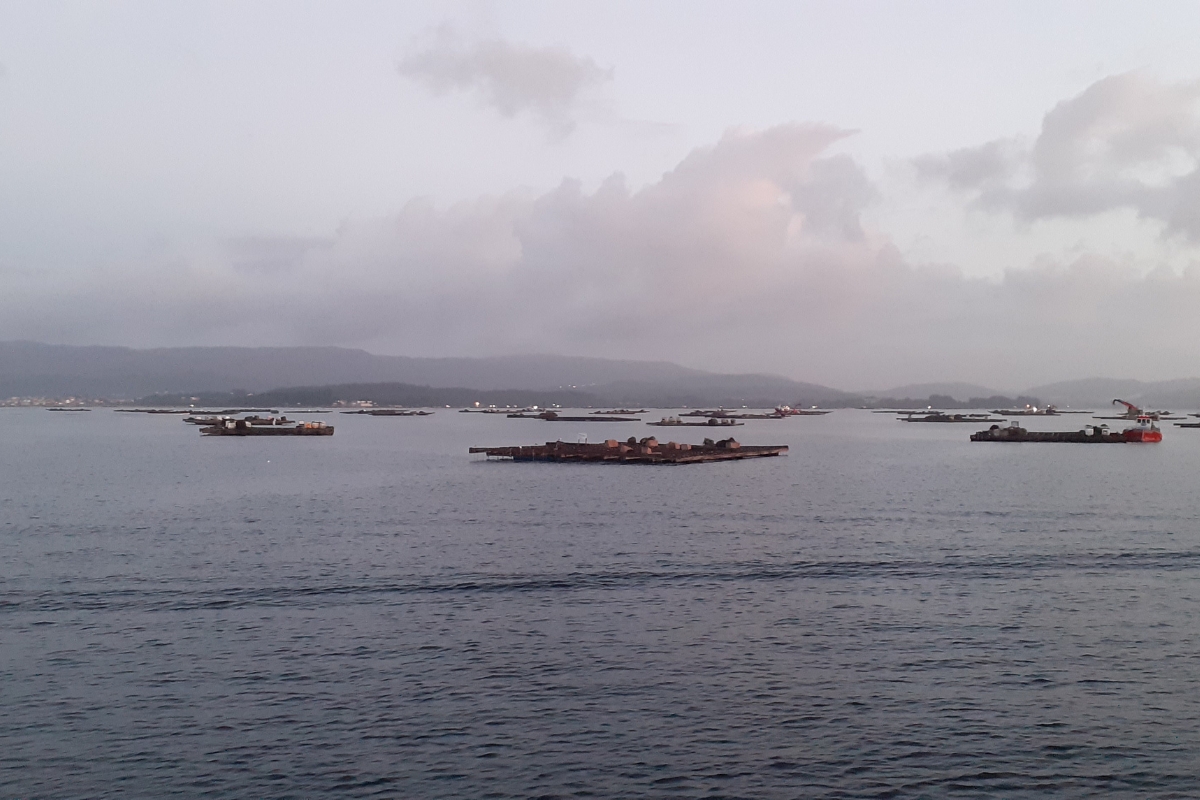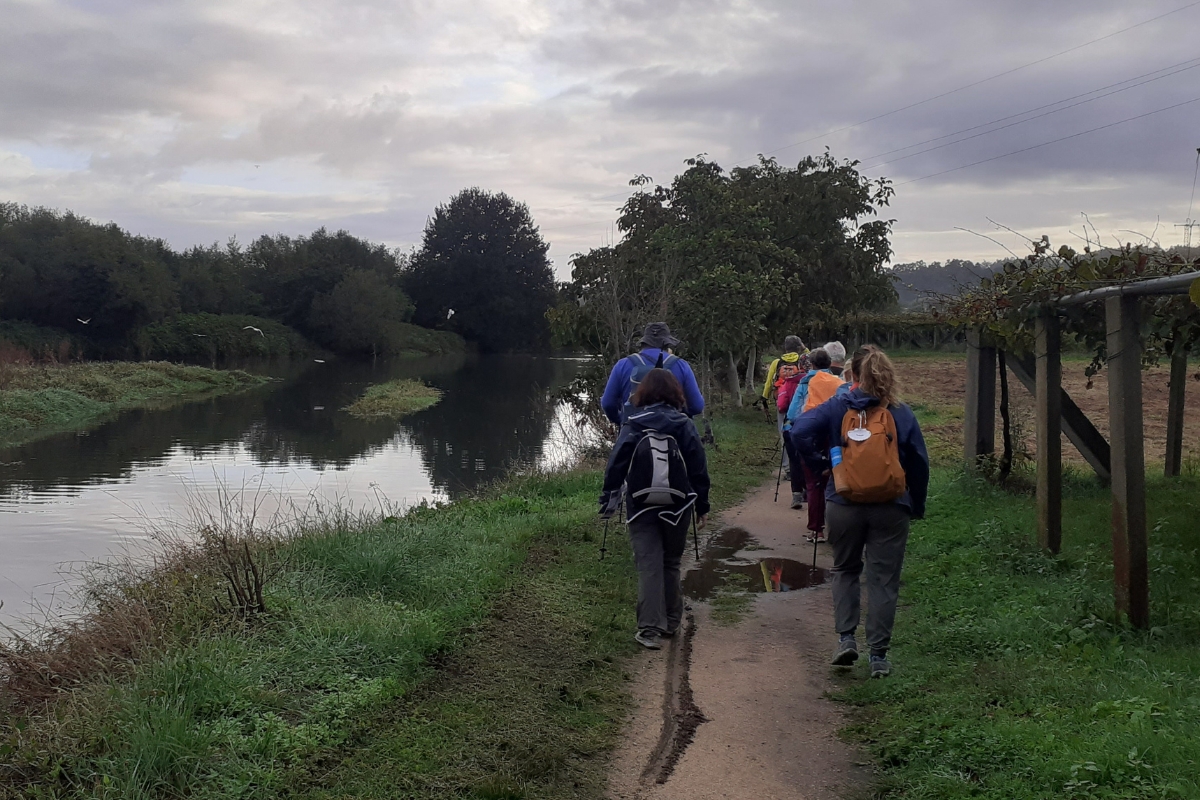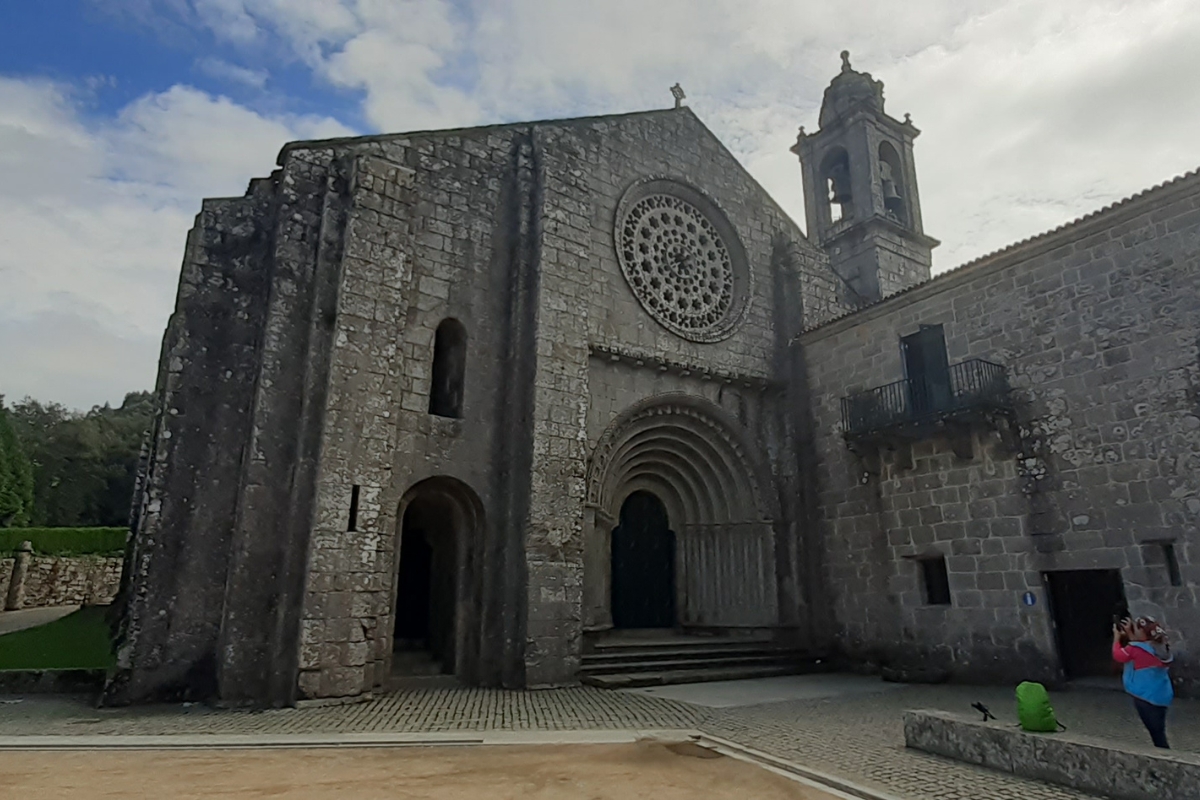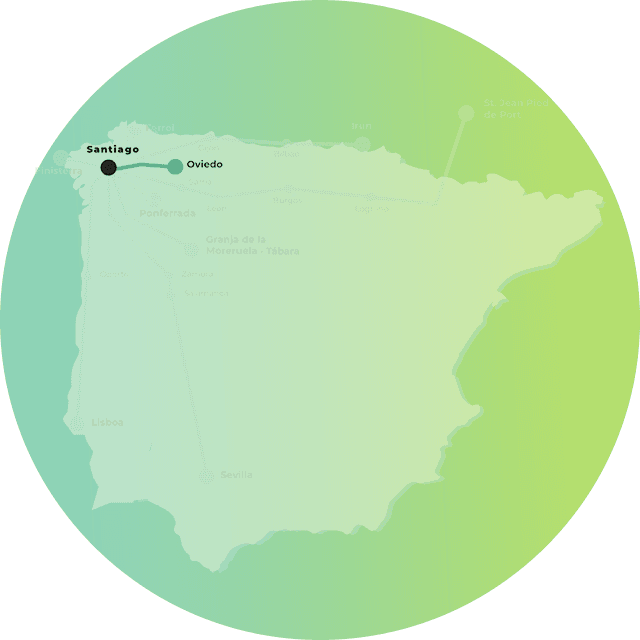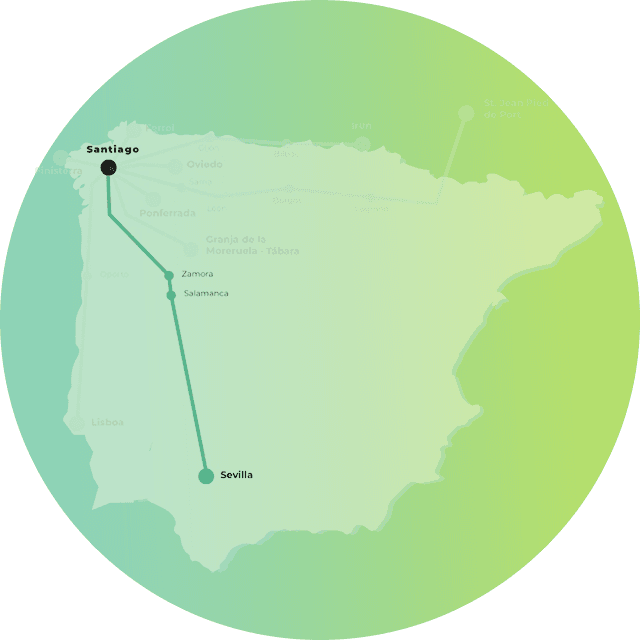The Spiritual Variant of the Portuguese Way
It recreates the Traslatio route, the origin of the Camino de Santiago.
The Camino de Santiago, along its Portuguese route, offers a journey of spiritual and cultural connection: the Spiritual Variant. This recently created and still unofficial path allows pilgrims to visit emblematic monasteries such as Poio and Armenteira, as well as experience the Jacobean tradition of the Traslatio.
The Spiritual Variant of the Portuguese Way crosses the region of O Salnés in four stages, including a boat journey through the Ría de Arousa. This navigable section recreates the legendary transfer of the remains of the Apostle James, offering pilgrims a unique experience that blends history, nature, and spirituality.
Our journeys on the Spiritual Variant of the Portuguese Way
Services we offer on the Camino de Santiago
Included in all our routes
- Accommodation booking selecting the best lodgings according to your budget.
- Luggage transport between stages.
- Practical information about the Camino in a detailed guide.
- Phone assistance en route we’re by your side for any questions or incidents.
- Travel insurance with broad coverage.
On group tours
- Accompanying guides professional support throughout the Camino.
- Support vehicle available during the stages.
Optional services
- Meals and diets: option to add breakfasts or half board.
- Private transfers to/from the point you need.
- Bicycle rental (mountain or electric bikes).
Map of the Spiritual Variant of the Portuguese Way
The map of the Spiritual Variant of the Portuguese Way outlines a 70 km route divided into four stages (one of them by boat), starting in Pontevedra and ending in Santiago de Compostela. Along the way, it passes through emblematic locations such as Combarro, Armenteira, Vilanova de Arousa, and the boat journey through the Ría de Arousa to Pontecesures and Padrón.
The elevation profile of the route features a moderate incline, with the most notable ascent leading to the Monastery of Armenteira during the first stage. This section requires effort due to its steep slope, followed by gentle descents through forests and vineyards. The maritime stage from Vilanova de Arousa offers a physical break as pilgrims sail through the Ría de Arousa, surrounded by mussel platforms and stone crosses forming a unique maritime Via Crucis.
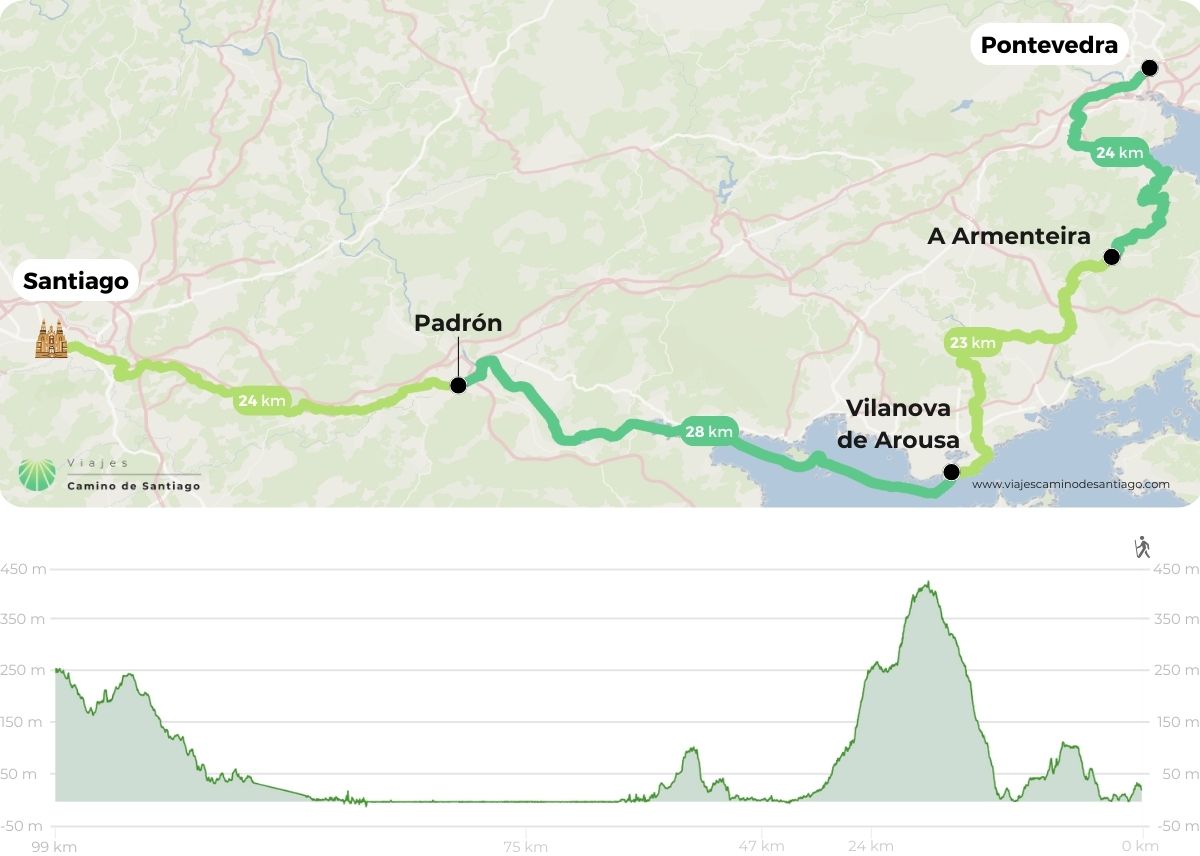
Information about the Spiritual Variant of the Portuguese Way
Why choose the Spiritual Variant of the Portuguese Way?
A route where spirituality and nature will captivate you.
The Spiritual Variant is the ideal route for a first experience on the Camino de Santiago, away from the crowds and noise of other paths. This journey offers the opportunity to explore charming fishing villages in the Rías Baixas, stunning coastal landscapes, and an exquisite cuisine centered around fresh fish and seafood. Additionally, pilgrims can enjoy a pleasant maritime and river journey that recreates the arrival of the Apostle James’ body in Galicia after his martyrdom in Jerusalem.
Beyond the sea experience, those who take on this variant will discover breathtaking monuments and landscapes, such as the Monastery of Armenteira and the A Pedra e da Auga trail—an 8 km route featuring dozens of water mills surrounded by lush vegetation.
Keep in mind that the Spiritual Variant is not an official route, meaning it does not grant the Compostela on its own. However, you can obtain it by combining this route with the last 100 km of another Portuguese path, such as the Portuguese Way from Tui or from Vigo—just a few extra days will complete your journey.
Nevertheless, pilgrims on this route can always earn the Pedronía, a certificate granted by the town of Padrón to those who reach the city and visit the Church of Santiago Apóstol.
What to see on the Spiritual Variant of the Portuguese Way?
Native forests, ancient mills, the richest estuary in Galicia, and impressive monasteries await you on this route.
Where to start the Spiritual Variant of the Portuguese Way?
From Pontevedra
From the beautiful city of Pontevedra, we present this interesting route, the Portuguese Way: Spiritual Variant, a perfect path for those who want to do the Camino de Santiago but don’t have much time. You can complete the 70 kilometers in just 4 stages, a journey that will take no more than five days. This route starts in the city of Pontevedra and crosses the O Salnés region to reach the coast again in Vilanova de Arousa. From there, the route follows the Ulla River to dock in Pontecesures, very close to Padrón. From this point, the journey continues on foot, adding the last common stage and following the same path as the Portuguese Way or the Portuguese Way of the Coast.
Stages of the spiritual variant of the Portuguese Way to Santiago de Compostela
The villages of the Spiritual Variant of the Portuguese Way
History of the Spiritual Variant: The Legend of the Traslatio
Legend has it that Finis Terrae or Finisterre was the most distant place the Apostle James reached while preaching the word of God. For this reason, upon his death, it was decided that his remains would rest in those distant lands. According to tradition, the disciples Theodorus and Athanasius placed the remains of James in a stone boat and sailed the seas until they reached the coast of Galicia. The boat traveled up the Ulla River to reach Iria Flavia, the place we now know as Padrón.
The legend of Queen Lupa tells that, after imposing a series of trials, she allowed the disciples to bury the remains of the apostle in “Campus Stellae,” now known as Santiago de Compostela. Later, the tomb was discovered by the hermit Pelayo in the 9th century.
This variant is a recently created route that aims to emulate the journey of the remains of the Apostle James, known as the Traslatio. Pilgrims will take a boat to sail up the Ulla River to disembark in Pontecesures, from where they will continue walking to Santiago de Compostela, recreating this important Jacobean episode.
Frequently asked questions about the Spiritual Variant
The total distance of the Spiritual Variant is 70 kilometers, starting from Pontevedra. It is important to note that this distance can vary depending on the complementary or alternative routes a pilgrim might choose during the journey.
Additionally, approximately 28 kilometers from the 3rd stage, between Vilanova de Arousa and Pontecesures, should be added. This stage is usually completed by boat, commemorating the episode of the Traslatio.
The Spiritual Variant is divided into 4 stages. It begins in Pontevedra and has almost 100 kilometers to go to Santiago de Compostela. It must be taken into account that this distance may vary depending on the possible variants or complementary and alternative paths that the pilgrim decides to take during the route.
Each stage would be the distance you travel in one day, from the starting location to the end of the walk, where you will spend the night. The stages can vary in distance and difficulty, and it is important to note that they can be adjusted according to your pace and physical condition. Some pilgrims choose to divide certain long or difficult stages, or lengthen those that are shorter or easier to walk. It all depends on having a place to sleep.
The Spiritual Variant of the Portuguese Camino de Santiago receives its name due to the deep historical and mystical connection it has with the legend of the arrival of the body of the Apostle Santiago to Galicia. One of the highlights is the boat trip through the Ría de Arousa, the Traslatio, which recreates the trip that, according to tradition, the Apostle’s disciples made when they transported his remains to Galicia.
The Spiritual Variant consists of 4 stages, so it lasts 4 days and covers almost 100 kilometers to Santiago de Compostela.
The Spiritual Variant of the Camino de Santiago is an alternative route located on the Portuguese Way and offers a unique experience by combining the walk with a boat tour.
With a total of almost 100 km from Pontevedra to Santiago, it is done in 4 stages, the last being common with the Camino Portugues. It is a perfectly signposted route, although it does not give the right to the Compostela by itself, as it is not considered official by the Santiago de Compostela Pilgrim’s Office.
Posts related to the Spiritual Variant
Other routes of the Camino de Santiago
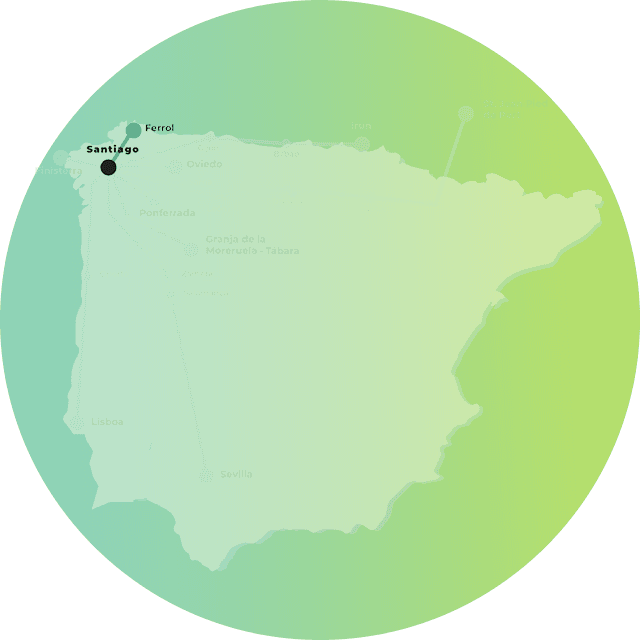
English Way
From Ferrol to Santiago de Compostela. Delve into the culture of villages of great military, naval and historical importance. 5 Etapas | 125 km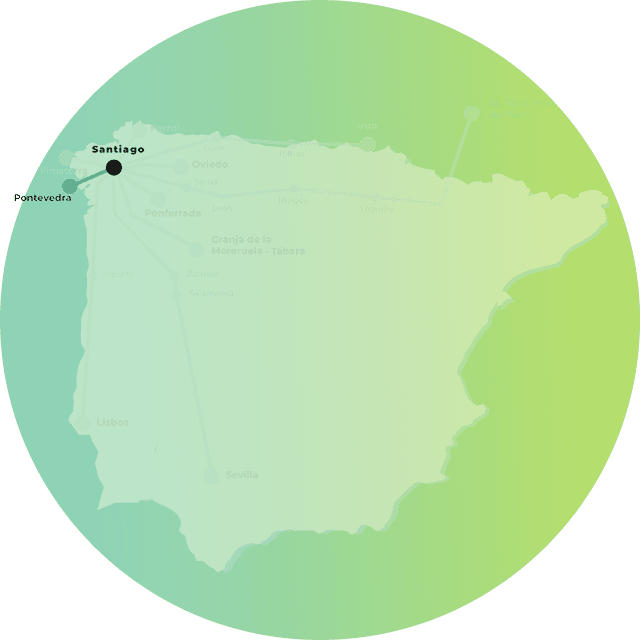
Father Sarmiento Way
The Father Sarmiento Way links Pontevedra to Santiago de Compostela, offering a scenic journey through beautiful landscapes. 6 stages | 142 km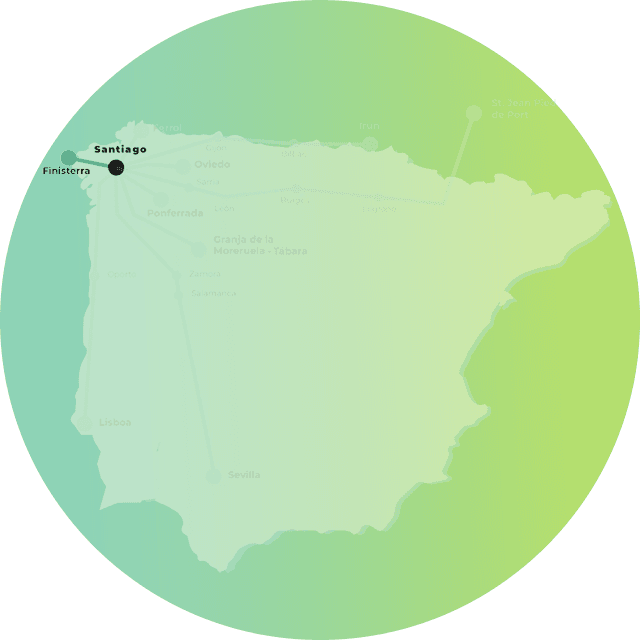
Finisterre and Muxía Way
From Santiago de Compostela to Muxía. A mystical and spiritual journey to the ends of the Earth 5 stages | 120 km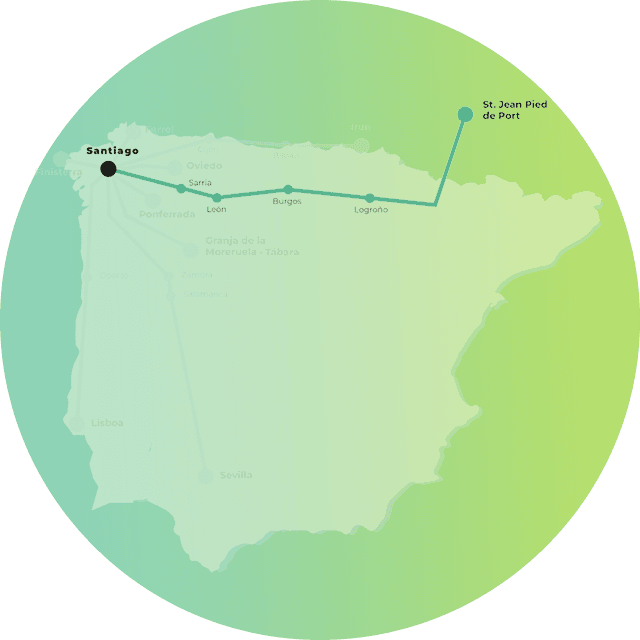
French Way
From Saint-Jean-Pied-de-Port to Santiago, trace Charlemagne’s path through the Pyrenees and trek 800 km on the French Way. 33 stages | 768 km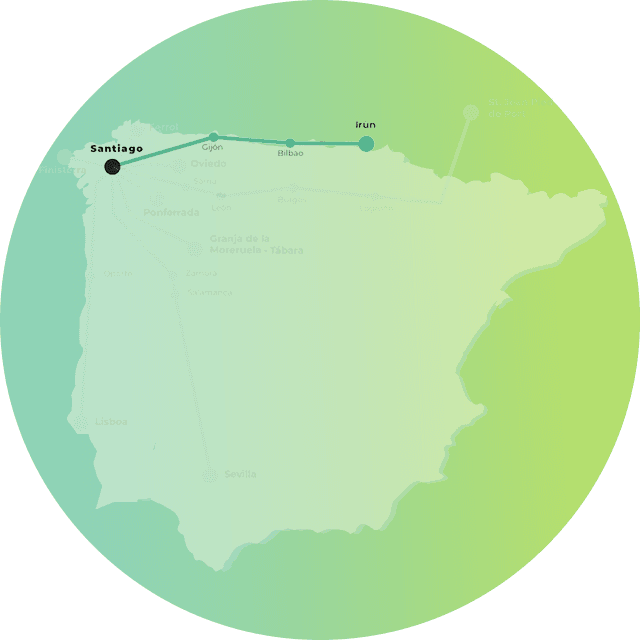
Northern Way
From Santiago de Compostela to Muxía. An unforgettable experience with breathtaking scenery 34 Stages | 820 km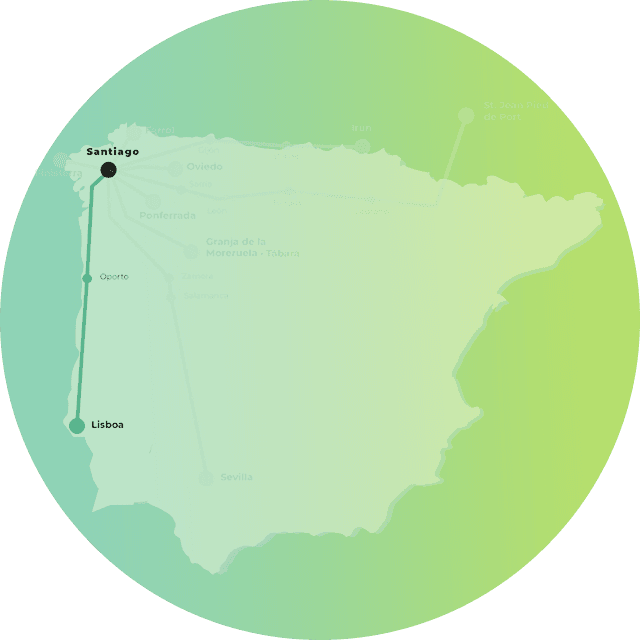
Portuguese Way
Starts in Lisbon and leads to Santiago de Compostela, offering a scenic journey through charming towns, coastal views, and culture. 27 stages | 620 km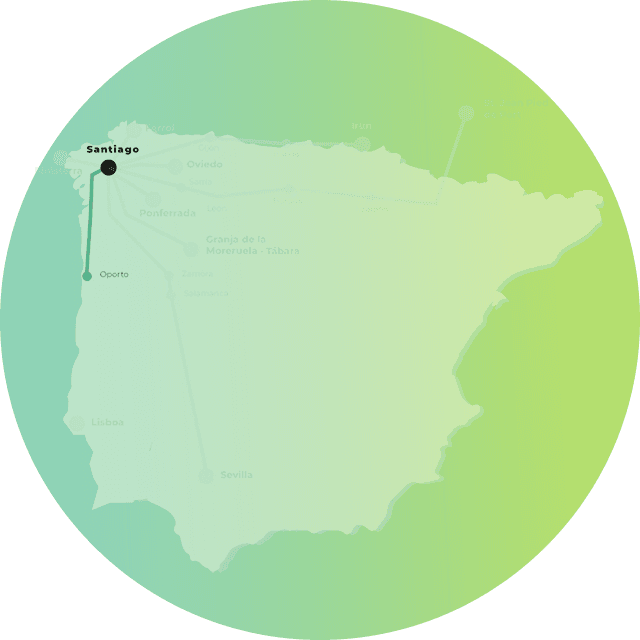
Portuguese Way along the coast
From Oporto to Santiago de Compostela. Total 194 km - 8 stages 8 Stages | 194 km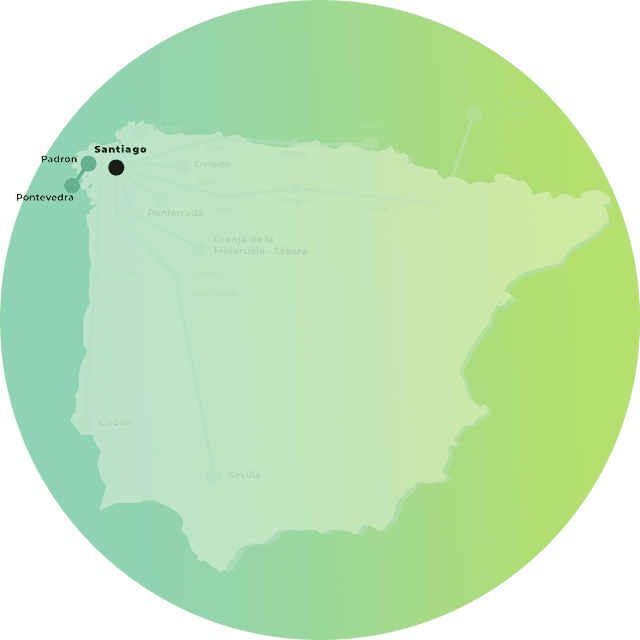
Portuguese Way: spiritual variant
From Pontevedra to Padrón. Total 81 km - 3 stages 3 stages | 81 km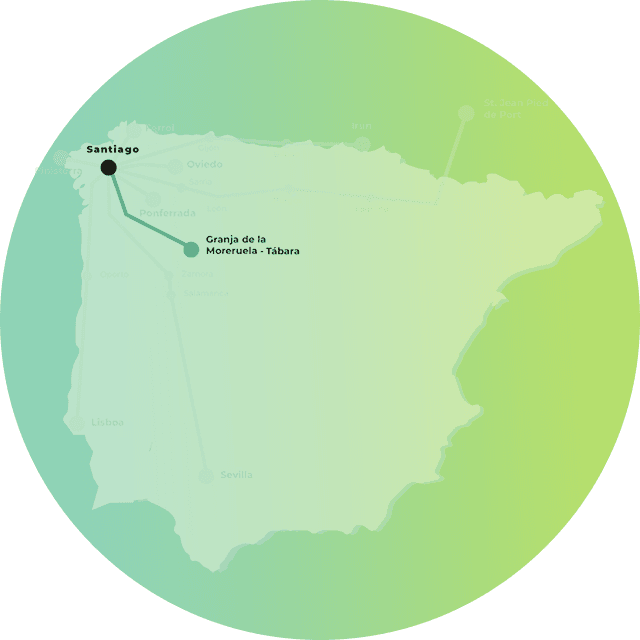
Sanabrian Way
From Granja de Moreruela to Santiago de Compostela. Total 365 km - 13 stages 13 stages | 365 km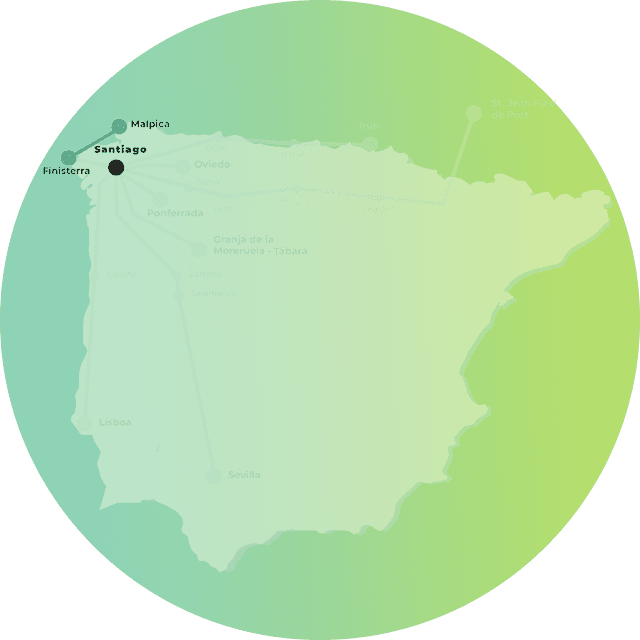
Way of the Lighthouses
From Malpica to Finisterre. A 200-kilometer journey along the coast and through the wildest of nature 8 stages | 195 km